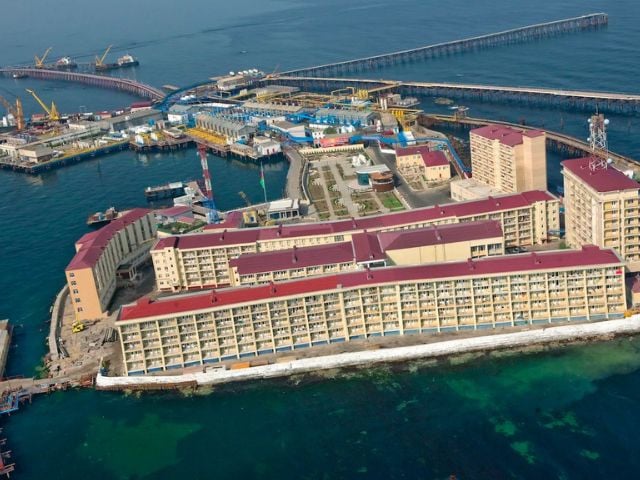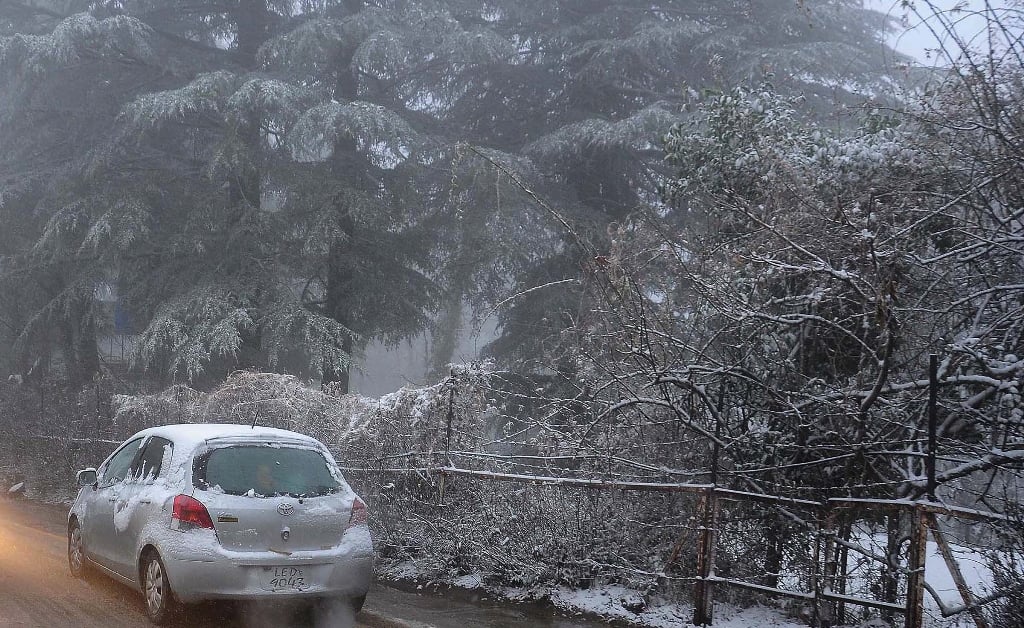
Neft Daşları, known as "Oil Rocks," is a Soviet-era oil city in the middle of the Caspian Sea, Azerbaijan's largest lake. It remains one of the world's most fascinating and mysterious industrial sites, serving as the oldest offshore oil platform in the world.
The city is a sprawling network of oil rigs, production sites, and connected bridges that float on the Caspian, a vast body of water rich in fossil fuels but also shrinking dramatically due to the climate crisis.
First discovered in the late 1940s, Neft Daşları’s history begins with a small drilling rig built on a tiny island by oil workers. The city expanded over time, as the Soviet Union constructed a network of more than 2,000 oil wells and 320 production sites.
The city’s most iconic feature is its network of over 100 miles of bridges that connect the floating platforms, and its location in the middle of the Caspian made it a unique engineering marvel.
At its peak in the 1960s and 1970s, Neft Daşları housed over 5,000 people and produced millions of tonnes of oil annually. It became known as a hub of Soviet oil production, symbolising both industrial achievement and the reach of Soviet engineering.
However, with the decline of Soviet influence and the global shift in oil exploration technologies, Neft Daşları’s significance has steadily waned. The city’s population has shrunk to around 3,000, with most workers now completing rotating shifts offshore.
Oil production, once a crucial part of Azerbaijan’s national output, has dwindled to less than 3,000 tonnes a day, or about 1 million tonnes per year. This represents a significant drop from its peak production of 7.6 million tonnes in 1967.
Despite these challenges, Neft Daşları remains operational today, though it faces growing risks from environmental degradation. Part of the city’s infrastructure has fallen into disrepair, and the Caspian Sea’s stormy waters continue to erode its once-pristine structures. Some of the bridges are collapsing, and sections of the city are being reclaimed by the sea, threatening its continued viability.
One of the unique aspects of Neft Daşları is its creation of artificial barriers to protect the city from storms. Seven decommissioned ships were deliberately sunk to form an artificial bay around the city, providing a shield from the waves.
These sunken ships are now part of the city’s eerie and rusting aesthetic. However, environmental concerns have been raised by organisations such as the Oil Workers Rights Protection Organization, which has highlighted oil spills and the dumping of untreated wastewater into the Caspian Sea.
The city has become a source of controversy as the world grapples with the consequences of climate change. As global leaders prepare for COP29, a major United Nations-backed climate conference taking place in Baku next week, the future of Neft Daşları looms large.
Despite being a historical symbol of Azerbaijan’s oil heritage, the city’s environmental impact remains a point of contention. The vast amounts of oil extracted from the Caspian have contributed to both local pollution and global climate change.
For the workers who still inhabit Neft Daşları, the reality is far from the city’s once-vibrant past. A sense of isolation pervades the city as it stands in a decaying state, yet it continues to produce oil—though its contribution to Azerbaijan’s overall production is now minor.
The question of what happens to Neft Daşları once its oil runs dry has become a pressing concern. Some experts believe the city could be repurposed for tourism, capitalising on its mystique and historical significance.
Others, including filmmaker Marc Wolfensberger, who documented Neft Daşları in the 2008 documentary "Oil Rocks: City Above the Sea," believe it could be transformed into a museum or heritage site, preserving the legacy of offshore oil exploration.
For now, Neft Daşları remains a symbol of both the glories and the costs of the oil industry. It stands as a reminder of Azerbaijan’s long history with oil production, yet also as a cautionary tale of an industry in decline, fraught with environmental and geopolitical challenges.
SOCAR, Azerbaijan's state-run oil company, has yet to respond to questions regarding the city’s future. However, it is clear that as oil production decreases and environmental pressures increase, Neft Daşları’s future remains uncertain. The city could be dismantled, preserved, or left to decay—its fate ultimately tied to the changing fortunes of oil in the Caspian Sea.



























COMMENTS
Comments are moderated and generally will be posted if they are on-topic and not abusive.
For more information, please see our Comments FAQ